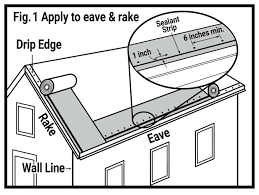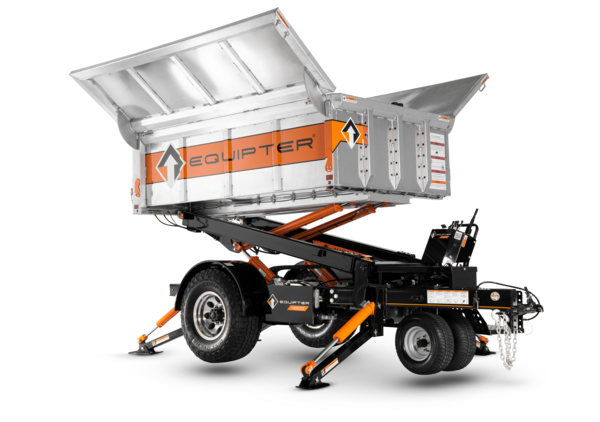Brehm Roofing Guide to Roofing Materials

Welcome to Brehm Roofing, your premier destination for all things roofing in Gainesville and North Central Florida. Our expertise spans across a variety of roofing needs, focusing primarily on roof replacements, installations, and reroofing. This comprehensive guide is designed to walk you through the myriad of materials and procedures that make up the core of our service offerings.
Understanding Roof Components for Reroofing
When it comes to reroofing, understanding the components involved is crucial for a durable and effective result. At Brehm Roofing, we pay close attention to every detail, ensuring that from decking to flashing, each part is perfectly installed.
- Decking Replacement: The foundation of any good roof is solid decking. We begin by inspecting the current OSB (Oriented Strand Board) or Plywood for any signs of soft spots or rot. Replacing rotted decking is a critical step in ensuring the longevity and integrity of the roof.
- Drip Edge Installation: The drip edge plays a pivotal role in directing water away from the roof and protecting the underlying components. Its installation is a critical step in preventing water damage and ensuring the roof’s longevity.
- Nailing Technique: Utilizing 8d ring shank nails is our standard practice. We use 6 nails per shingle. These nails provide superior holding power, reducing the risk of shingle loss in high winds, which is particularly important in the Florida climate.
- Underlayment: In compliance with Florida Building Codes, we use two layers of underlayment to waterproof the roof deck. This not only provides superior protection but also ensures a longer lifespan for the roof. We prefer using 1 inch button caps for securing underlayment, with a particular preference for stinger button caps known for their durability and effectiveness.
- Valley Flashing: We typically use peel and stick or metal valley flashing to direct water away efficiently. This is especially critical in areas where water tends to collect or flow heavily during rains.
- Roof Penetrations and Walls: For roof penetrations and sidewalls, a peel and stick method is employed for its superior sealing capability. Step flashing is also used around side walls, head walls, and chimneys to further ensure that every nook and cranny is watertight.
- Skylights: Aging skylights are a common issue in many homes. We recommend replacing older models with new ones that come with a self-flashing kit, significantly reducing the risk of leaks.
- Roofing Cement Application: To ensure everything is sealed tight, we use roofing cement around all flashing areas. This extra step guarantees that even the smallest of gaps are filled, preventing any future water intrusion.

The Importance of Starter Shingles
Starter shingles are crucial in providing the first line of defense against wind uplift at the edges of your roof. We ensure that each roofing project begins with these, particularly along the eaves and rakes, further securing them with roof cement. This practice is particularly vital in the Florida region, where strong winds are a common occurrence.

Pipe and Exhaust Boots
All pipe and exhaust boots are replaced during our roofing process. This replacement is not just about ensuring current functionality but also about preventing future issues. Given the role these boots play in ventilating your home and keeping water out, it’s a critical step in maintaining the health of your roof.
Chimney and Ventilation Work
Chimney covers and flue caps often become worn or damaged over time. As part of our comprehensive service, these are inspected and replaced as needed to ensure that your chimney is functioning safely and efficiently. Ventilation is another critical aspect of roofing, particularly in the hot Florida climate. For gable roofs, we install ridge vents, while hip roofs might see the installation of turtle vents or off-ridge vents. These installations help in maintaining a properly ventilated home, reducing heat and moisture accumulation.
Facia, Soffit, and Gutters
The facia and soffit are more than just aesthetic components; they play a crucial role in the structural integrity and ventilation of your roof. Our installation ensures that your soffits promote adequate air circulation, reducing the risk of rot and decay. Gutters are another critical component, especially given Florida’s heavy rainfall. Properly installed gutters protect your siding and foundation from water damage, effectively channeling water away from your home.
Field Shingles and Roof Nailing
At Brehm Roofing, we use high-quality field shingles and ensure that each is secured with 1.25-inch roof nails, using 6 nails per shingle. This method is particularly effective against the strong winds common in the region, providing your roof with an extra layer of protection.
Specialized Equipment for High-Efficiency
For steep pitched roofs, we utilize an Equipter, which aids in the efficient removal of old roofing materials and minimizes the mess created during the process. All torn-off debris is disposed of in a dumpster, reflecting our commitment to cleanliness and efficiency throughout the roofing process. We prioritize in keeping your property clean and safe. Our team will take a sweep around the perimeter of your home and make sure we do our best to pick up noticeable piece of debris. We won’t leave until the homeowner is completely satisfied.
Conclusion
At Brehm Roofing, we pride ourselves on delivering top-notch service with a keen eye for detail and a strong commitment to quality. Our guide to roofing materials is a testament to our thorough approach and dedication to ensuring that every roof we work on is built to last, especially under the challenging Florida weather conditions. Remember, whether it’s a replacement, installation, or reroofing, we’ve got you covered.


